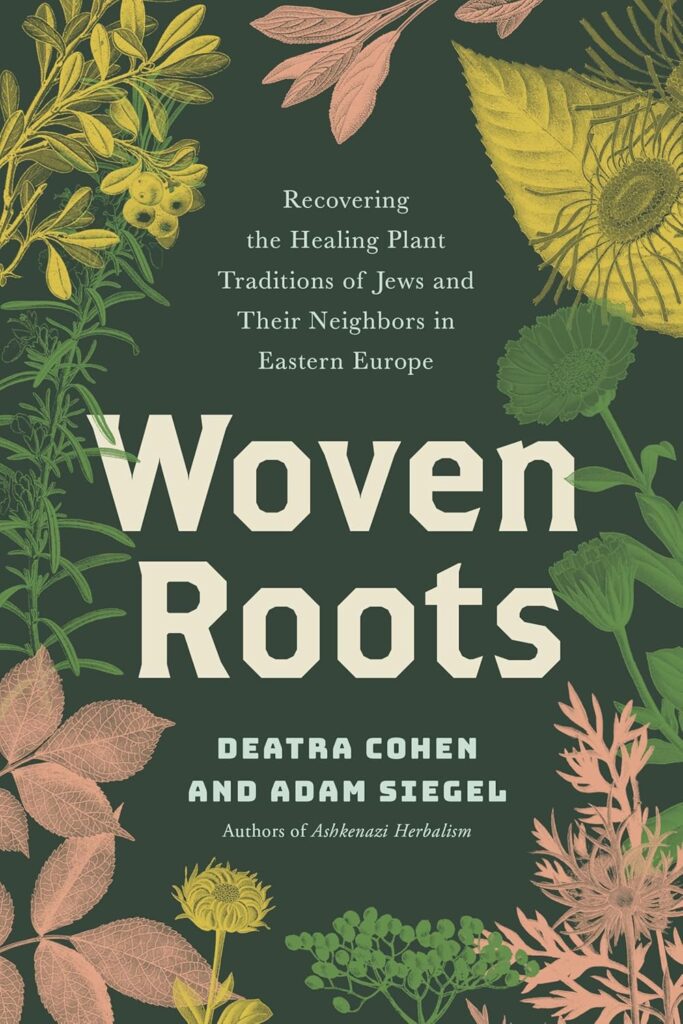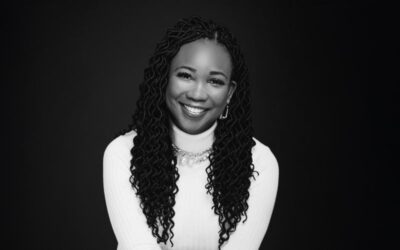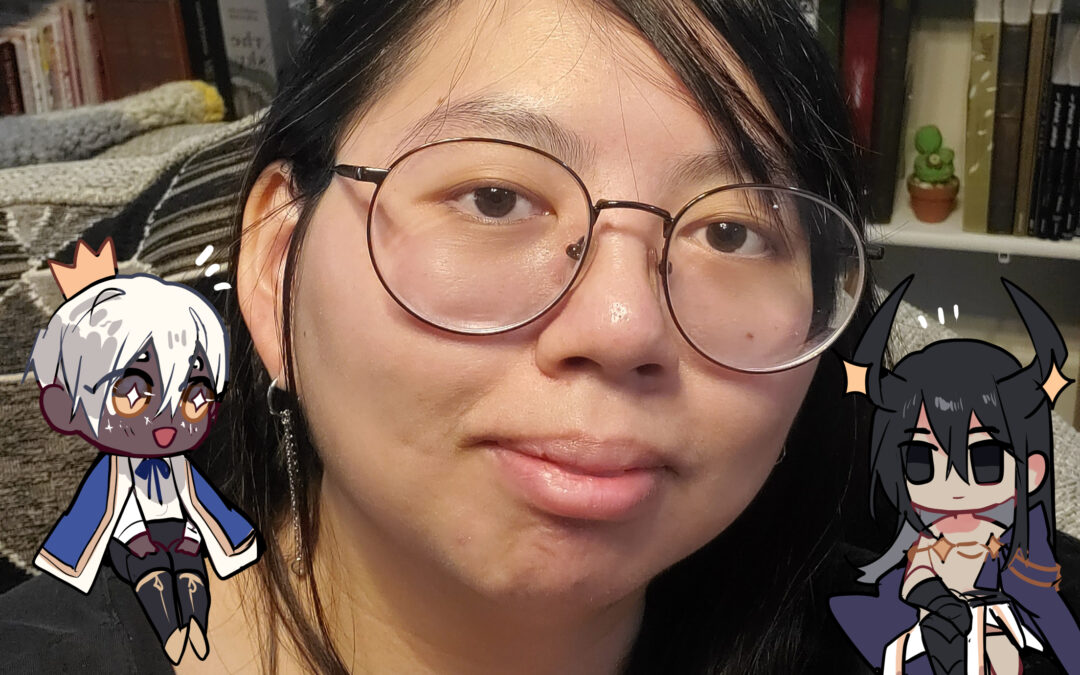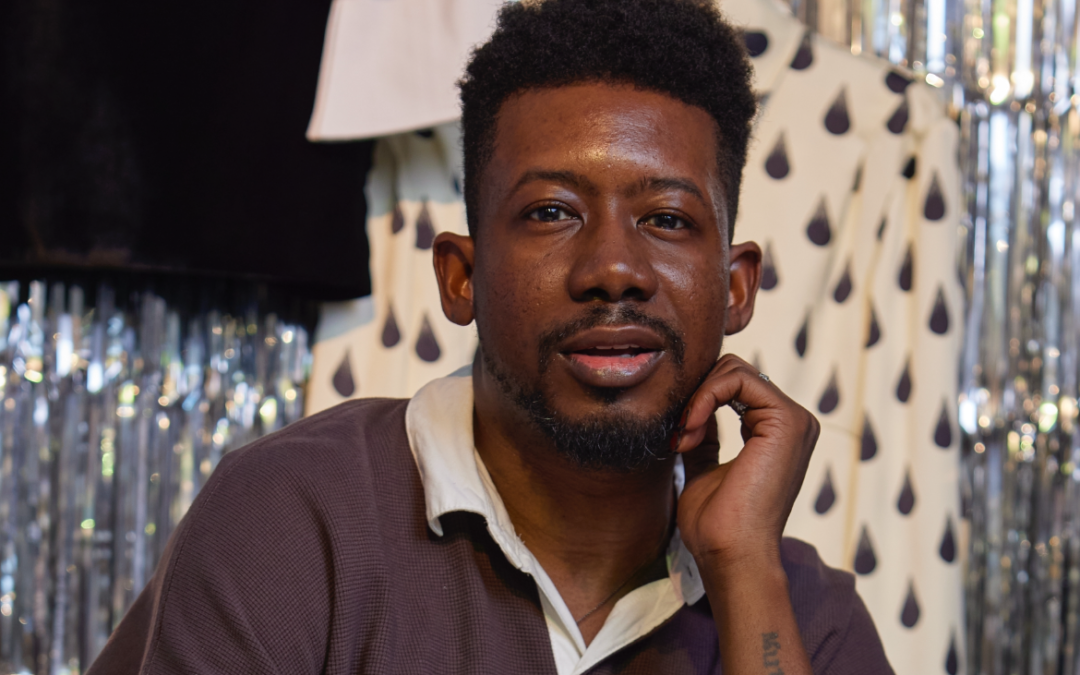Deatra Cohen is an author, herbalist, and artist. She holds degrees from the University of California, Davis, San Jose State University, and the Berkeley Herbal Center. Deatra lives in Northern California.
Adam Siegel is an author, translator, and bibliographer. He is a graduate of the University of Minnesota, the University of California, Berkeley, and San Jose State University, and lives in Northern California.
I had the opportunity to interview Deatra and Adam, which you can read below.
First of all, welcome to Geeks OUT! Could you tell us a little about yourself?
D: Thanks for the invitation to tell your readers about our books! I grew up in and around Philadelphia in the 1970s and now that I’ve got a little perspective on that time and place in my life, I can see how the city had a profound effect on me, especially in terms of my love for the mystery and wonder of the natural world, things you might not at first associate with such an urban environment. But Philadelphia is a large, very verdant metropolis surrounded by smaller towns and villages that are all connected by lush woods and parks. In some ways it’s a lot like Eastern Europe where my ancestors came from. Our family was not at all religious and this has given me the freedom to do a lot of observation and consideration about what is meaningful to me. Other things that have brought me to the present moment of who I am have been my work as a librarian, daydreaming, imagination, making art, music, and of course plants and people.
A: I’m a librarian and a translator.
What can you tell us about your most recent book, Woven Roots: Recovering the Healing Plant Traditions of Jews and Their Neighbors in Eastern Europe? What was the inspiration for this project?
A: Woven Roots expands the world that Deatra and I uncovered in our first book, Ashkenazi Herbalism. In this book, we have tried to recover a communal world of shared folk healing (particularly women’s folk and plant healing) that flourished in Eastern (and Central and Southeastern) Europe, in mixed communities of Christians, Jews, and sometimes Muslims.
D: It’s a book that reacquaints readers with practices that have been lost, forgotten, ignored, suppressed, and erased, which I think makes them all the more haunting and worthy of re-examination and appreciation. More perfunctorily, Woven Roots reveals a part of Eastern European history that’s largely unknown, but no less important than other better documented aspects of this corner of the world.
A: Woven Roots was born because we kept encountering hints and scraps and shards of evidence that whispered to us that many multi-ethnic communities in Eastern (and Central and Southeastern) Europe engaged in what can only be called mutual aid when it came to caring for the vulnerable during pregnancy, childbirth, illness, and death.
D: Initially my inspiration was not to write a book at all but rather to find what plant medicines one set of my grandparents would have been familiar with because they came from a very isolated shtetl deep in the forests of Poland. I had been a librarian for many years so I was determined to find the written record covering this part of Ashkenazi life in the Pale of Settlement. Crazily enough, what I discovered was that little to nothing exists in the huge published corpus devoted to the history of the Jewish Pale. What little that does exist is buried in haystack upon haystack of literature regarding these communities. Over time and purely by accident, I stumbled upon what Adam and I came to call “the hidden herbal,” a story within a story. This entailed decoding an obscure ethnobotanical survey that covers Ukraine and was published in the United States in 1952. I wrote a final paper on this discovery for the herbalism program I was enrolled in at the time. After realizing more people would be interested in the information I’d uncovered, I published an essay of my findings in the Journal of the American Herbalists Guild. Eventually it became obvious to me that this forgotten part of Ashkenazi history needed to be more widely accessible. Ashkenazi Herbalism came out of this realization and set the stage for Woven Roots, a book that reveals a much fuller picture of the folk healers of that region over time. Neither of these books could have been conceived or written without the combined interests and talents of Adam and myself.
As an author, what drew you to writing, especially non-fiction?
A: I’ve been engaged as a “writer” for a while: I’ve published fiction, poetry, literary translations, and academic writing. In this work that Deatra and I are engaged in, I think we both feel less like writers or authors than conduits. To be able to bring something into the world and into people’s lives that they welcome is a great gift.
D: It’s funny: I don’t feel like an author at all. We, Adam and I, often joke that we aren’t writers, but conduits of information that is hiding in plain sight and that we just happened to come upon at the time that we did. Other than that, I felt a real urgency to make these hidden histories more findable for anyone who longs for them, like I did, because I believe they have always been needed, and this is especially true now.
As a Jewish scholar and clinical herbalist, what first drew you to the subject of Jewish herbalism?
A: Deatra is the clinical herbalist, and I have been engaged with Eastern European folk culture(s) for a long time. I was trained and educated as a Slavic linguist, and I’ve long been fascinated by the richness of the folk cultures of the many peoples who have lived in Central and Eastern Europe–Slavs, Jews, Roma, Germans, Romanians, Magyars, Turks and Tatars, and so on.
D: When I first enrolled in the herbal program I wasn’t thinking at all about how different cultures work with plants or the literature dedicated to those practices. I was also completely ignorant of the ancient traditions that contemporary herbalism descends from. The reason I became interested in the practices of my ancestors was because the first assignment our class was given was to share home remedies our families had known. At that time, all I could recall was the tea with lemon and honey my mom made when I had a cold. Later I realized there were other such homespun curatives I didn’t even associate with folk medicine such as if for some reason I happened to get bonked on the head my mother would take the flat side of a butter knife and press it on the resulting bump. Little did I know growing up that was a custom practiced in the shtetl. Until we began this research, it had never occurred to me that this was an ancient custom. Since beginning our project, I’ve read of similar remedies, some using coins instead of butter knives (to reduce a bump on the head), but always metal objects. So, this almost accidental curiosity is what led me to the subject of Jewish herbalism and folk healing. More practically, as an herbalist, I believe it’s very important to be familiar with the plant remedies one’s ancestors would have relied on, especially when working with clients from backgrounds different from your own. Our bodies are woven from these deep time plant connections so it can be very helpful to include familiar herbal allies when formulating a remedy.

What are some of your favorite elements of writing and researching? What do you consider some of the most frustrating and/or challenging?
A: I love doing research–I love finding things out–which is pretty much what people have paid me to do throughout my adult life. I would say that I enjoy re-writing more than I do writing. I used to provide library instruction to writing classes at my old job, and the pedagogical approach of encouraging students to get that “shitty first draft” out of the way has stayed with me.
D: I love stumbling on something so simple it might have been obvious, or finding a puzzle piece for a pattern that had already begun taking shape. For writing, I like wending my way through an idea and then putting that writing away for a while to read later and chip away at it until something both compelling and possibly beautiful can come through all my blather….In this particular research, I find the deliberate erasures frustrating and maddening and trying to piece often minuscule slivers together can be very challenging but now more than ever it’s so important to revivify these connections. In spite of how impossible the task may seem at times, it’s the sense of urgency to recover this history that’s kept me focused. Plus the plant world is endlessly fascinating.
As an author who or what would you say are some of your greatest creative influences and/or sources of inspiration in general?
A: I absolutely had a secret model/inspiration/exemplar for Woven Roots, and because I’m superstitious I’m loath to share it. Sorry to be so coy!
In general, though, I would say that the German novelist Hubert Fichte, in his roman fleuve Die Geschichte der Empfindlichkeit is an aesthetic inspiration. Influence? Prose style? Woven Roots and Ashkenazi Herbalism were written jointly, and I would say that Deatra has been my greatest influence–as we’ve both sort of melded our styles together.
I think I have John Aubrey (Brief Lives) in my head when I write with Deatra.
D: Weirdly enough, what immediately comes to mind are visual artists like Giorgio Morandi and Albert York. There is so much mystery in the mundane that we can’t even see it until we really slow down and take the time to sense it. Full disclosure, a friend and I did mushrooms way back when and each time I was very aware of and saw and sensed the presence of another world right there, right next to me and sure enough, I literally entered into it, one time in the form of an abandoned optometrist’s office and workshop in the Tenderloin. For many years I kept an ancient pair of James Joyce-like frames from that trip but they’ve since disintegrated. Beyond those, I try to stay very attuned to my senses, and also I try as much as possible to maintain an awareness of being a body in this world, physically and otherwise. Of course my family and friends are absolutely an inspiration in everything I do. And the planet, warts and all.
Aside from your work, what are some things you would want readers to know about you?
A: I’m playing music again, after a long hiatus!
D: I’m so boring, I can’t think of anything intriguing…I’ve waited tables, tried and failed at skinny-dipping, and I definitely don’t like herring in any food-oriented incarnation.
What’s a question you haven’t been asked yet but that you wish you were asked (as well as the answer to that question)?
A: How long have you and Deatra been together? A long time!
D: Did you really want to be a race car driver when you were a child? Yes, it’s true. My brother had a poster of Mario Andretti that I secretly coveted and years later had a 70s Fiat coupe I drove like a maniac.
What advice might you have to give for aspiring writers out there?
A: Obsessively pursue the writing projects, subjects, and themes that you find all-consuming, and leave yourself absolutely open to chance and accident while you’re writing. Draw inspiration from other art forms. Write to surprise yourself.
D: Maybe don’t aspire but just write? Keeping a blog can help. Keep it for your own edification or just don’t tell anyone it exists until when and if you’re ready. Also, if you can, exchange letters with someone or someones. Adam and I wrote letters to each other for a dozen years and that correspondence was really the beginnings of our writing collaboration.
Are there any other projects you are working on and at liberty to speak about?
D: We’ve got a couple of things we’d like to pursue, both of which are related to our current research. That’s pretty much all I can say about them not because they’re secret but because they’re still being mulled.
A: What Deatra said! We do have a couple of shorter essays that we’re working on now, based on Woven Roots discoveries.
What specific titles would you recommend for fans of Ashkenazi Herbalism: Rediscovering the Herbal Traditions of Eastern European Jews and Woven Roots: Recovering the Healing Plant Traditions of Jews and Their Neighbors in Eastern Europe?
D: There are many people who are working to recover their ancestral folk medicine practices. A few titles that come to mind are:
The Land In Our Bones: Plantcestral Herbalism and Healing Cultures From Syria to the Sinai—Earth-Based Pathways to Ancestral Stewardship and Belonging in Diaspora by Layla K. Feghali
Working the Roots: Over 400 Years of Traditional African American Healing by Michelle Elizabeth Lee
Della Medicina: The Tradition of Italian American Folk Healing by Lisa Fazio
A: Marek Tuszewicki’s A Frog Under the Tongue was hugely important for us in writing both books. Three histories of the Jewish ethnographic project in Eastern Europe were also essential for us in recovering the world of Jewish folk culture in Eastern Europe:
Wandering Soul: The Dybbuk’s Creator, S. An-Sky by Gabriella Safran
The Jewish Dark Continent: Life and Death in the Russian Pale of Settlement, by Nathaniel Deutsch
Defining the Yiddish Nation, by Itzik Gottesman
Finally, what books/authors would you recommend in general to the readers of Geeks OUT?
D: In LGBTQIA+ literature, three of my favorites are oldies but goodies:
The Sophie Horowitz Story by Sarah Schulman
Travels with Lizbeth by Lars Eighner
Fun Home by Alison Bechdel
I’m in awe of Max Dashu’s amazing research which can be found on her website: https://www.suppressedhistories.net/ and her books can be found here: https://veleda.net/
More generally, A memoir that’s stayed with me is The Sound of a Wild Snail Eating by Elizabeth Tova Bailey.
A: Agree with Deatra about Travels with Lizbeth. The other best LGBTQIA+ book published in the nineties is Such Times by Christopher Coe. It’s in German, but the above-mentioned Hubert Fichte’s Die Geschichte der Empfindlichkeit (The History of Sensitivity) is the best novel cycle of the twentieth century in any genre let alone LGBTQIA+ literature. I’ve published translations of two of the volumes, A Research Report and The Black City. If any publishers out there would like me to translate the entire work, just let me know! It’s so capacious and globe-spanning in its survey of memory, Germany in the twentieth century (particularly its cultural history), the problem of tourism, one of the first and sharpest accounts of “the Global South,” queer culture, the AIDS crisis, and African syncretic religious beliefs on both shores of the Atlantic–I’ve been reading and re-reading it for over twenty years, and it is an ongoing inspiration and source for my/our work. It’s a masterpiece.







0 Comments